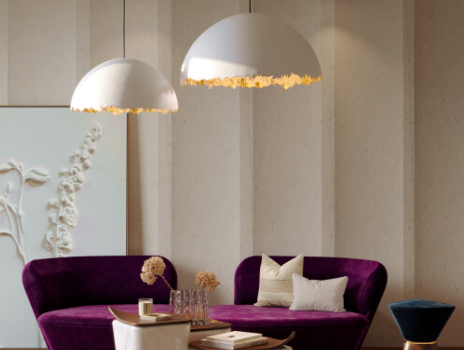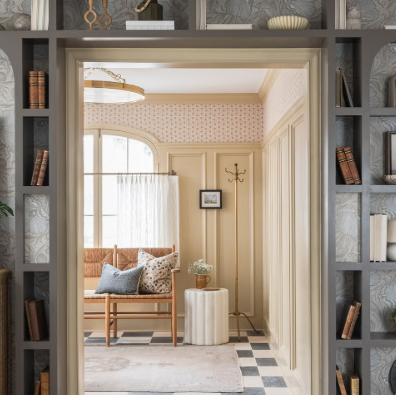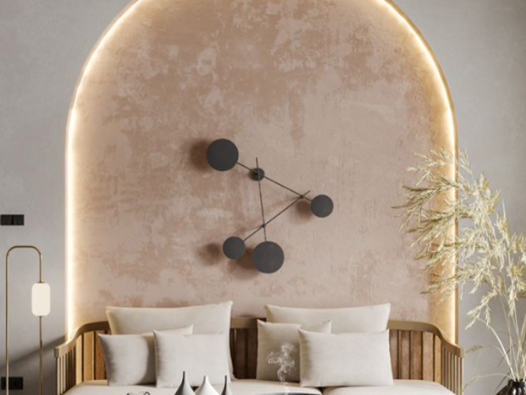
Sustainable interior design is about more than just aesthetics—it’s about creating spaces that are not only visually appealing but also environmentally responsible. This approach focuses on reducing environmental impact by using eco-friendly materials, energy-efficient systems, and design practices that promote long-term well-being. As sustainability becomes increasingly important, sustainable interior design is no longer just a trend, but a necessity for both the planet and our health.
Core Principles of Sustainable Interior Design
Sustainable interior design is centered around minimizing harm to the environment while enhancing the comfort and beauty of living spaces. The following are some of the key principles that guide this design philosophy:
1. Resource Efficiency
Designing with natural resource efficiency in mind is critical. This involves using materials that are renewable, recycled, or responsibly sourced. For example, bamboo is a fast-growing, renewable resource that is frequently used for flooring and furniture.
2. Energy Conservation
Incorporating energy-efficient technologies like LED lighting, solar panels, and smart thermostats can significantly reduce energy consumption. Well-positioned windows for natural light and ventilation also contribute to a more sustainable environment.
3. Waste Reduction
A zero-waste approach to design focuses on repurposing and recycling old materials instead of discarding them. Vintage or reclaimed furniture can be refurbished, reducing waste and adding unique character to your space.
4. Health and Well-being
Designing for the health of the inhabitants is an essential part of sustainability. Non-toxic paints, low-VOC finishes, and natural fabrics improve indoor air quality and reduce exposure to harmful chemicals.
Why Sustainable Interior Design Matters
With increasing environmental challenges such as climate change and resource depletion, adopting sustainable interior design practices is more important than ever. The construction and design industries contribute significantly to these problems, making sustainable design a crucial part of the solution.
Sustainable interior design not only helps to reduce the carbon footprint of our living spaces but also encourages mindful consumption, focusing on long-term environmental and personal benefits. Creating a home that prioritizes sustainability leads to healthier, toxin-free spaces that can improve overall well-being.
Sustainable Materials for Interior Design
The materials used in sustainable interior design are chosen for their low environmental impact, durability, and recyclability. Here are some eco-friendly materials to consider:
1. Bamboo
Bamboo is a fast-growing, renewable resource ideal for flooring, furniture, and wall panels due to its minimal environmental impact.
2. Recycled Metal
Metals like aluminum and steel can be repurposed into modern furniture and decor, reducing the need for new resources.
3. Reclaimed Wood
Salvaging wood from old buildings or furniture helps prevent deforestation and gives a rustic, eco-friendly touch to interiors.
4. Cork
Cork is harvested from the bark of cork oak trees without harming the trees, making it a renewable material for flooring, insulation, and furniture.
5. Natural Fabrics
Opt for organic cotton, hemp, or linen for upholstery and curtains. These materials are biodegradable and free of harmful chemicals.
6. Eco-Friendly Paints
Traditional paints often contain volatile organic compounds (VOCs) that harm indoor air quality. Low-VOC or VOC-free paints offer a safer alternative for your home.
Incorporating Sustainability into Your Home Design
To create a sustainable home, a balance of careful planning and creativity is needed. Here are some ways to integrate sustainable design into your space:
Eco-Friendly Flooring Options
Choose materials like bamboo, cork, or hardwood from certified forests. For a more modern option, consider polished concrete or recycled tiles.
Maximize Natural Light
Design spaces to make the most of natural light, reducing your reliance on artificial lighting. Large windows, skylights, and open layouts help bring more daylight into your home.
Energy-Efficient Appliances
Invest in Energy Star-rated appliances that consume less energy, lowering both your utility bills and your environmental footprint.
Water Conservation
Install low-flow faucets, dual-flush toilets, and water-efficient showerheads to conserve water without sacrificing functionality. Consider rainwater harvesting systems for added sustainability.
Sustainable Furniture
Look for furniture made from reclaimed wood, recycled materials, or responsibly sourced timber. Choose brands that prioritize sustainability to align your purchases with eco-friendly values.
Lighting and Sustainability
Lighting is a key element in sustainable design, combining function and aesthetics. Choose decorative lighting made from recycled or natural materials. For example, pendant lights made from bamboo or recycled glass not only look great but also support sustainable practices. Switching to LED bulbs reduces energy consumption, offering significant environmental benefits compared to traditional incandescent bulbs.
The Growing Role of Green Interior Design in Modern Living
More and more homes are being designed with sustainability in mind, embracing green principles that prioritize energy efficiency and minimal environmental impact. Some of the most prominent trends in modern sustainable homes include:
Smart Homes
Smart technology is revolutionizing eco-friendly home design. Features like automated lighting, energy-monitoring systems, and climate controls optimize energy usage while minimizing waste.
Biophilic Design
Biophilic design integrates natural elements such as indoor plants, wooden accents, and plenty of natural light to connect the indoors with the outdoors. This approach not only promotes sustainability but also enhances mental well-being.
Local Sourcing
Using locally sourced materials reduces the carbon footprint of transportation and supports local economies, benefiting both the environment and the community.
Challenges in Achieving Sustainable Design
While sustainable interior design offers numerous benefits, there are some challenges. Sustainable materials can sometimes be more expensive than traditional ones, and sourcing eco-friendly materials may require extra effort to avoid “greenwashing” (misleading claims about sustainability).
The Future of Sustainable Interior Design
As environmental awareness grows, sustainable interior design is becoming more accessible. Advancements in technology are helping to create new materials and design solutions that make green living both practical and stylish. Homeowners are also recognizing the long-term financial benefits of sustainable design. Energy-efficient homes and durable materials can save money over time, making sustainability a smart investment for the future.
Conclusion
Sustainable interior design is a conscious choice that benefits both the environment and our well-being. By using eco-friendly materials, energy-efficient systems, and sustainable practices, you can create a home that is not only beautiful but also environmentally responsible. Embracing these principles helps reduce your carbon footprint and creates a healthier living space, making it an important step toward a better future for the planet.










